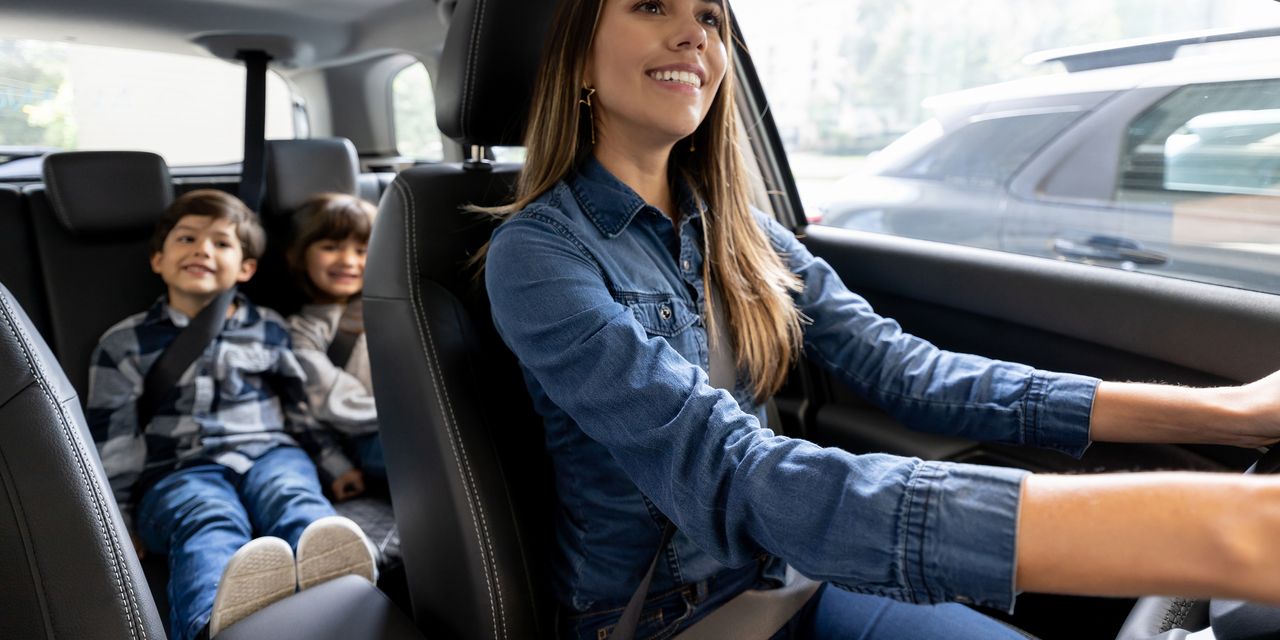Don’t sacrifice important safety features when searching for a new or used car, even when you want to save money. New and used cars are expensive. If you are shopping right now, you’re probably looking for ways to save money. Maybe you’re considering a certified pre-owned car instead of a new one. Perhaps you’re opting for a sedan or a hatchback to save money rather than a full-size SUV or pickup truck.
We’ll provide a list of safety features you shouldn’t skimp on when searching for your next vehicle.
7 safety features you need in your next car
Consider these features to help keep you safe when searching for your next vehicle.
1. Rear parking camera
If you’re an experienced driver, this might be OK to do without, especially in a small car. There are many solid used cars that don’t have parking cameras. However, if you’re buying a car for a teenager, like an inexpensive first car, don’t skip the parking camera. Learning without a parking camera is good, but having one for an inexperienced driver can make a big difference.
For anyone who frequently parks in very tight spaces, you might want a 360-degree parking camera. This kind of camera lets you see all the way around the car, not just what’s behind you.
PRO TIP: Honda
HMC,
automobiles are especially noteworthy for their rear parking cameras because most offer different views the driver can select based on the circumstances.
Also see: The most and least reliable car brands, according to Consumer Reports
2. Rear cross-traffic alert
While many older cars may have front or rear parking sensors, a rear cross-traffic alert goes one step further. It usually works in concert with rear parking sensors, but the rear cross-traffic alert tells the driver when there’s something moving toward the car and into view. For example, say you’re in a grocery store parking lot and need to back out of a space where you can’t see approaching vehicles or pedestrians. The rear cross-traffic alert will signal that a person or a car is approaching from either side. It can be a good substitute for a rear parking camera in a pinch.
Related: Five popular small cars rate ‘poor’ for rear-seat safety in new, tougher crash test
3. Forward collision warning and prevention
Forward collision warning monitors vehicles ahead of you and lets you know when you’re approaching too rapidly. It “sees” that the object ahead is going slower than you or is stopped and alerts you that a collision may be imminent.
Forward collision prevention furthers that technology and applies the brakes to help avoid a collision or lessen the severity of an unavoidable collision. This is especially helpful in low-speed situations such as a drive-thru, a parking lot, or stopped traffic when your attention may be diverted for a second.
PRO TIP: Be sure to test drive the car first because some forward collision warning and forward collision prevention systems are very sensitive. However, others can have their level of sensitivity adjusted.
4. Traction control
Traction control and stability control are not the same, but they’re related and often use some of the same systems to get the job done.
Traction control helps keep your wheels from slipping when it’s raining or driving on ice, snow, or sand. It does this by cutting engine power or using the brakes selectively without driver intervention. Think of traction control as something that works best when you’re driving in a straight line at low speed.
Plus: Need a fuel efficient, run-about-town compact SUV? Check out the 2023 Hyundai Kona.
5. Stability control
Stability control is an enhancement to traction control or uses some of the same systems and principles. Stability control uses the brakes and engine power to keep your car from sliding. In-car sensors detect the lateral movement of the car. A computer analyzes the movement and rotation of the car and intervenes to keep your car from going sideways or into a spin. In simple terms, stability control corrects understeer and oversteer. Some used cars may have traction control but not stability control. If a car comes with stability control, it likely has traction control.
6. Engine immobilizer
Some newer cars have an engine immobilizer, while others don’t. In the simplest terms, an immobilizer is an anti-theft feature that uses a microchip inside the key with a code that talks to the car. The result is that the car cannot be started without one of those keys. Engine immobilizers often use radio frequency identification (RFID) to allow the key to “talk” to the car. When you search for a used car, certain trim levels of the models you’re considering may or may not have this feature.
The price difference between a base “L” model and a deluxe “Premium” may be $1,000 or less when buying a used car. Before purchasing a used car with a lower or base trim level, check the original equipment from the window sticker or research online to ensure the car came standard with an engine immobilizer. Some used cars of a lower trim level will not offer an engine immobilizer.
You might like: Volvo’s new electric EX30 offers exceptional safety and power—and the price is a bargain among EVs
7. Side curtain airbags
Of course, the used car you’re looking at should offer front airbags at a minimum. Today, cars without airbags are likely to be very old, and probably the buyer is looking for something very specific, either as a collector’s item or something similar. Having airbags is important. However, not all cars come with side curtain airbags. Some cars from the ’90s and early 2000s may have frontal airbags only, but this primarily protects the upper body from forward impacts.
Look specifically for “side curtain” or “head curtain” airbags. This is especially important for young drivers as it prevents a head injury, something that can be very serious for a teen driver.
According to Insurance Institute for Highway Safety (IIHS), federal regulations mandated frontal airbags for all passenger vehicles manufactured as of the 1999 model year. IIHS also states that federal regulations on side-impact protection don’t specifically require side curtain airbags, but the government standards are typically met with their inclusion. These side-impact regulations have been in place for passenger vehicles since the 2014 model year.
PRO TIP: I would not let my teen driver drive a car without side airbags. As a side note, some cars now have knee airbags, and that’s something to look for, too, depending on the year, make, and model of the car you’re shopping for. Some Ford
F,
vehicles have airbags in the seat belts. This is a worthwhile safety feature. However, if you have very small children, those seat belts can be cumbersome and are difficult for small kids to buckle themselves, especially when in a booster.
The bottom line here is the newer the car you’re buying, the more these features will either be standard or optional. The older the used car you’re looking at, the less likely some of these features will be included. Before you start looking for specific models, consider which of these safety features you think are necessary. Then, you can start looking for models in your price range that have those must-have features.
If it doesn’t seem clear from looking at the vehicle specifications online, ask someone at the dealership or the car’s owner. They may have the original window sticker, or they may have extra information you need.
This story originally ran on Autotrader.com.
Read the full article here




